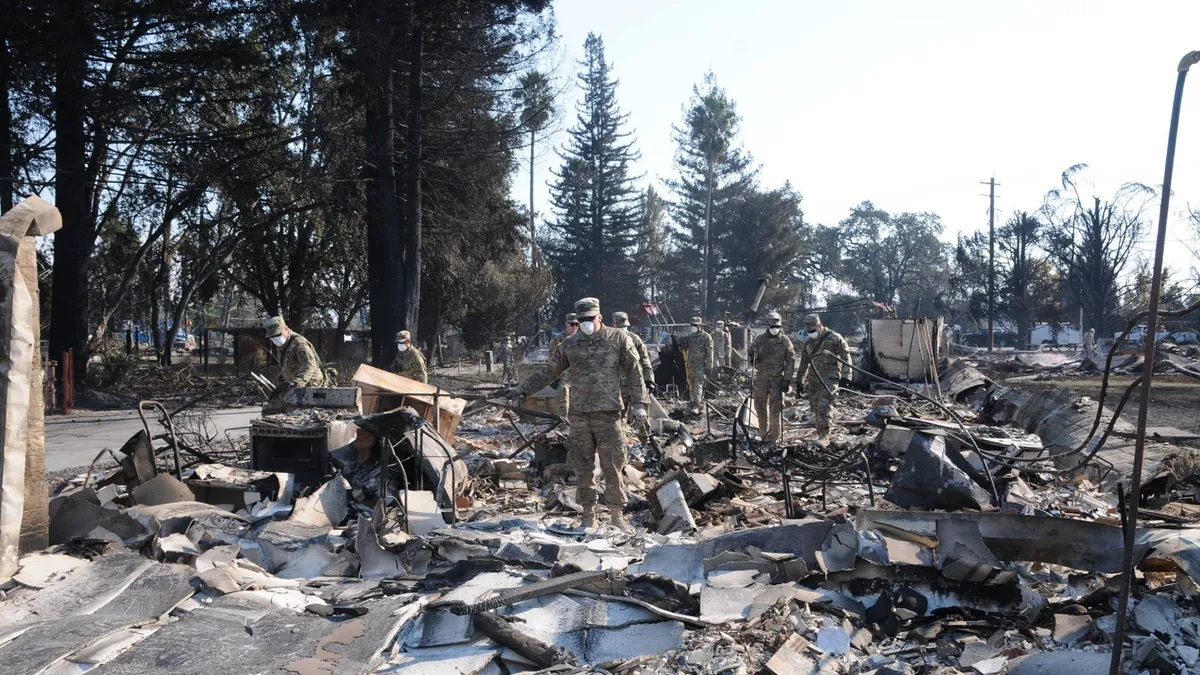UPDATE: The Environmental Protection Agency (EPA) estimates it is close to 90% complete clearing hazardous waste from around 7,000 properties in two California counties that were hit by last month’s wildfires, as reported by The Press Democrat.
The EPA, which is only clearing hazardous waste, like paint, batteries, fertilizers, ammunition and pool chemicals, estimates that it will be done clearing Sonoma County and Napa County by the end of November.
"This has been the largest urban fire response we’ve been involved in," said EPA incident commander Steve Calanog.
The EPA hasn't tallied the tonnage of waste collected yet. After the hazardous waste is cleared, the U.S. Army Corps of Engineers will be able to clear ash, debris and concrete from damaged homes. So far, at least 120 sites have been cleared.
Dive Brief:
- California Gov. Jerry Brown signed an executive order over the weekend, clearing the way for the U.S. Environmental Protection Agency to send staff to aid in cleanup efforts as wildfires die down. The cleanup area spans over 250 square miles and efforts could cost hundreds of millions of dollars. Because of materials like asbestos and freon, the cleanup was declared a public health emergency, as reported by SF Gate.
- After identifying landfills with enough airspace to hold rubble and debris, officials will need to get consent from property owners to clear the land. It is likely that the state will have to hire hundreds of contractors to haul debris, according to the San Francisco Chronicle.
- Homeowners will not be held financially liable for the cost of cleanup and removal, though businesses or commercial property owners may be. Exact details of the cleanup plan will be "widely publicized" once finalized, as reported by The Press Democrat.
Dive Insight:
Cleanup in California will be difficult. Bulky construction and debris material can take up substantial airspace in local landfills that may not be prepared for an influx of high volume. Due to the nature of the disaster, officials and contractors will also have to haul away ash, which could also present challenges of volume and possible toxicity. Some of the waste will include asbestos, freon and other dangerous substances, creating a large volume of hazardous waste.
Heavy rain — like the kind that often come during California winters — would wash ash into streams and rivers. The runoff could be poison for animals and humans for years. An even greater time crunch will be the race to dispose of buried toxic material, or items like filled gas tanks that could be dangerous if improperly handled.
Even after the ash and debris are cleared in California, the service providers who clean, clear and haul the material could still see themselves in a position to provide more services. While not every niche disposal service works out, there are some that continue to grow. As wildfires could become a more frequent occurrence, wildfire cleanup will continue to be a niche service in the waste industry with potential for serious growth.










